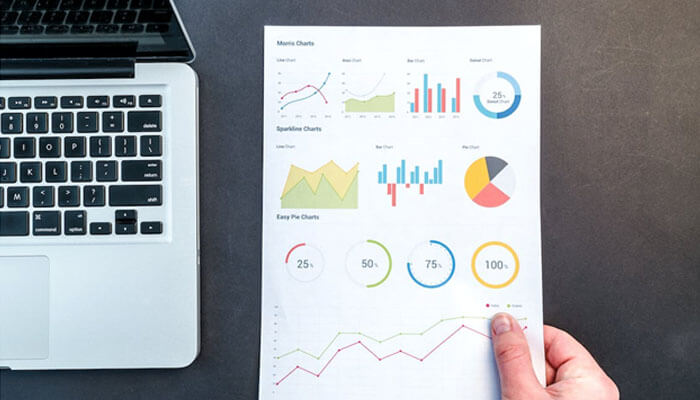Current estimates indicate that a staggering 2.5 quintillion bytes of data are generated daily. This is attributed primarily to the growth of the Internet of Things (IoT) devices, the widespread use of mobile devices, and the development of cloud computing. However, to make sense of this data, businesses must use advanced data analytics to identify patterns and trends and generate insights that will assist them in making informed decisions.
The use of data analytics has become an integral part of every organization’s business processes. As a result, organizations are taking a proactive approach to leverage data analytics to optimize their operations and make more informed decisions. This article will discuss data analytics’s role in a company’s success.
How Can Businesses Effectively Use Data Analytics?
Analyzing data effectively requires both the availability of relevant data and appropriate tools for uncovering insightful information from that data. Employees are better equipped to tackle specific business issues with increased efficacy by ensuring these essential components are in place.
Businesses can encourage the adoption of data and analytics by starting with small, easily attainable goals and demonstrating the immediate value these efforts can provide. This approach cultivates a data-driven culture within the organization, in which data is viewed as a valuable resource and leveraged to yield positive results.
Furthermore, all members of an organization must have a fundamental understanding of how to use data to generate valuable insights. There are multiple resources online that can help employees get that knowledge. Those in more specialized roles, such as data analysts, can pursue more advanced education, such as an MBA in data analytics, to gain in-depth knowledge and skills to interpret data and make meaningful and impactful decisions.
The Role of Data Analytics in Different Business Processes
An organization makes decisions based on data analysis. Different business functions use data analysis to achieve their strategic goals. Some common examples include:
Marketing
Marketing professionals employ data analysis to gain valuable insights into consumer behavior and preferences, which allows them to create more effective and targeted marketing campaigns. By analyzing data on consumer behavior, marketers can also assess the impact of their marketing efforts and make data-driven decisions about where to allocate resources for maximum impact. In addition, data analysis can help marketers understand the impact of marketing campaigns on sales, customer engagement, and other key performance metrics. This will allow them to refine and improve their marketing strategies continuously.
Sales
Sales teams use data analysis to monitor their performance and identify trends in the sales process. By analyzing data on sales trends and customer behavior, sales teams can optimize their sales process to increase efficiency and effectiveness, ultimately leading to improved sales performance and revenue.
Finance
Financial analysts rely on data analysis to monitor financial performance and make informed decisions about investments and funding. Financial analysts can forecast future financial trends and identify areas of risk and opportunity by analyzing financial data, enabling them to make sound decisions that drive the organization’s financial success.
HumanResources
Human Resources professionals use data analysis to monitor employee performance and evaluate the effectiveness of HR programs. By analyzing data on employee performance, HR professionals can identify areas for improvement and optimize these programs to increase productivity, satisfaction, and engagement among employees, ultimately contributing to the organization’s overall success.
Benefits of Data Analytics for Your Business
Businesses that adopt data analytics have a significant advantage over those that do not. Through data analytics, organizations can gain a deeper comprehension of their customers and their needs, opening up new avenues for business growth.
Personalize the Customer Experience
Businesses gather customer data through various mediums, including physical retail, web searches, and social media platforms. Companies can build comprehensive customer profiles using data analytics, allowing them to obtain valuable insight into their customers’ behavior and preferences.
For instance, a clothing store may analyze its sales data, along with information acquired through its social media profiles, in order to design targeted marketing campaigns to promote particular product categories that are of interest to its customers.
Additionally, organizations may utilize analytical models to enhance the customer service experience. For instance, a business may employ predictive analytics on its e-commerce transactional data to determine the most suitable product recommendations at checkout, resulting in increased sales.
Inform Business Decision-Making
Enterprises can leverage data analytics to enhance their decision-making processes and reduce financial losses. A predictive analytics approach can predict the outcomes of changes in the business, whereas a prescriptive analytics approach can provide suggestions on how to respond to the changes.
For instance, a business may use data analytics to model changes to product offerings or pricing and determine their effect on customer demand. Through A/B testing, we can experimentally evaluate these changes, and we can collect and analyze sales data to measure their success. Management can use data analytics tools to visualize the results and determine if the changes should be adopted throughout the organization.
Streamline Operations
Businesses can enhance their operational efficiency by leveraging data analytics. By collecting and examining supply chain data, we can identify potential sources of production delays and anticipate future issues. For example, a forecast suggests a vendor won’t be able to handle the required volume for the holiday season. In that case, the organization may supplement or replace the vendor to prevent production disruptions.
Furthermore, many businesses, particularly in the retail industry, face challenges in optimizing their inventory levels. An enterprise can use data analytics to determine the optimal level of supply for all of an enterprise’s products, taking into account factors such as holiday seasons and other trends.
Mitigate Risks
Risks are a ubiquitous aspect of the business world, encompassing a range of potential issues such as customer or employee theft, bad debt, liability issues, and employee safety. Data analytics can assist organizations in identifying and mitigating these risks. For instance, a retail chain may utilize a propensity model that will predict future actions or events to determine the stores that are most susceptible to theft. This data can then inform security requirements at each store location or even inform decisions regarding the closure of specific stores.
Wrapping Up
The dependence on data, especially in the business world, is undeniable and has grown significantly recently. Data has become an essential component of any organization, a trend that is poised to continue shortly.
However, despite the abundance of data available to organizations, converting it into valuable insights is not straightforward. To achieve this, companies must invest in employing data analysts and developing a comprehensive data strategy permeating all organization areas. Furthermore, having the right data analysis tools in place is essential for organizations to make better, more informed decisions that can help drive business growth.




